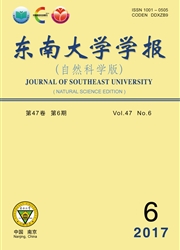

 中文摘要:
中文摘要:
建立了点-面、面-面有向距离函数的一阶、二阶微分表达式的统一理论模型.在此理论模型的基础上提出了线性方法(基于点面距离函数一阶微分性质)、单边二次方法(基于点-面距离函数一、二阶微分性质)和双边二次方法(面-面距离函数一、二阶微分性质)的3种夹具定位分析方法,进而分析了定位元和工件的局部曲率对夹具定位精度的影响.仿真试验表明:当定位元的曲率半径相对于工件的曲率半径较小时,3种分析方法的精度相当;但当定位元的曲率半径相对于工件的曲率半径较大时,线性方法、单边二次方法不能跟踪理论值的变化,而双边二次方法却能很好地跟踪理论值的变化,表明了双边二次模型的高精度特性.
 英文摘要:
英文摘要:
The first order and the second order Taylor expansions of surface-to-surface distance were deduced and then were naturally extended to point-to-surface distance functions to build a unified framework.Consequently a linear method(based on the first-order differential property of PSSD(point-to-surface signed distance)),a one-sided quadratic method(based on the first-order and the second-order differential properties of PSSD) and a two-sided quadratic method(based on the first-order and the second-order differential properties of SSSD(surface-to-surface signed distance)) were proposed under this framework.Analyses were carried out to find out the effect of the curvatures of locators and workpieces on the fixturing accuracy.The simulation results show that the three methods provide similar precision when the curvature of locators is small relative to the curvature of workpieces.However,when the curvature of locators is large relative to the curvature of workpieces,the two-sided quadratic method provides the highest precision while the one-sided quadratic and the linear method cannot track the theory values well.
 同期刊论文项目
同期刊论文项目
 同项目期刊论文
同项目期刊论文
 期刊信息
期刊信息
